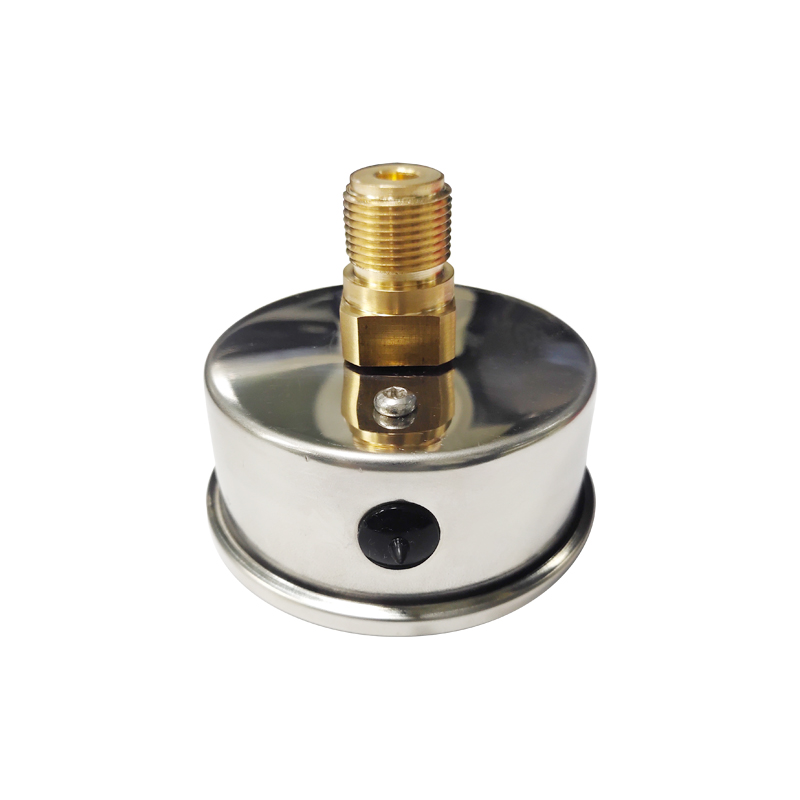
Dec . 30, 2024 22:10 Back to list
Understanding Diaphragm Pressure Gauges and Their Applications in Various Industries
Understanding Diaphragm Pressure Gauges
Pressure measurement is a critical aspect of many industrial applications, and diaphragm pressure gauges are among the most reliable instruments used for this purpose. Their design and functionality allow them to measure pressure in various environments, from simple mechanical systems to complex industrial processes. This article explores what diaphragm pressure gauges are, how they work, their applications, and advantages.
What is a Diaphragm Pressure Gauge?
A diaphragm pressure gauge is a type of pressure measuring instrument that utilizes a flexible diaphragm to sense pressure changes. The diaphragm, typically made of materials like stainless steel, bronze, or plastics, is placed under pressure. When pressure is applied, the diaphragm deforms, and this movement is translated into a measurement. The gauge can display this pressure either through mechanical means (like a needle gauge) or digital readings in electronic models.
How Does it Work?
The working principle of diaphragm pressure gauges hinges on the deflection of the diaphragm. When pressure is applied to one side of the diaphragm, it bends or deforms in response to the pressure exerted. This deformation is then converted into a rotational or linear motion, which moves a pointer on a dial or is digitized for electronic pressure gauges.
The deflection of the diaphragm can be analyzed in two primary forms absolute pressure measurement, which refers to measurements relative to a perfect vacuum, and gauge pressure measurement, which compares the pressure in the system to the ambient atmospheric pressure. This flexibility makes diaphragm pressure gauges suitable for various applications.
Applications of Diaphragm Pressure Gauges
Diaphragm pressure gauges are used across numerous industries, including
1. Process Industries In chemical, food, and pharmaceutical sectors, diaphragm gauges monitor the pressure of gases and liquids in tanks, pipelines, and reactors. 2. HVAC Systems These gauges help to measure pressure in heating, ventilation, and air conditioning systems to ensure operational efficiency. 3. Oil and Gas Diaphragm pressure gauges are extensively used in the oil and gas industry to monitor pressure in drilling rigs and storage tanks.
about diaphragm pressure gauge

5. Automation and Control They find applications in automated processes in various industries, ensuring that pressure levels remain within predetermined ranges.
Advantages of Diaphragm Pressure Gauges
Diaphragm pressure gauges have several advantages that make them a popular choice
1. High Accuracy The design of diaphragm gauges provides excellent accuracy and reliability in pressure readings. This attribute is crucial in sensitive processes, where pressure deviations can lead to significant issues.
2. Durability Made from robust materials, diaphragm gauges can withstand harsh environmental conditions, including corrosive substances and high temperatures, making them suitable for a wide range of applications.
3. Minimal Maintenance Diaphragm gauges have fewer moving parts than other types of pressure gauges, leading to lower maintenance requirements and prolonged service life.
4. Versatility Their capability to measure both positive and negative pressure (vacuum) adds to their versatility, allowing them to adapt to various industrial needs.
5. Compact Design The design of diaphragm pressure gauges can often be more compact than their counterparts, making them easier to install in tight spaces.
Conclusion
Diaphragm pressure gauges are essential tools in industrial applications for accurate and reliable pressure measurement. Their unique design and functional advantages make them suitable for various environments, ensuring safety and operational efficiency. As industries continue to evolve, the importance of accurate pressure measurement remains paramount, and diaphragm gauges will undoubtedly play a crucial role in this field. Whether in chemical processing, HVAC systems, or automated controls, understanding the workings and benefits of diaphragm pressure gauges is essential for anyone involved in pressure monitoring and control.
-
High-Precision Mass Diaphragm Pressure Gauge - Reliable & Durable Solutions
NewsJun.10,2025
-
Explain Diaphragm Pressure Gauge Expert Guide, Top Manufacturers & Quotes
NewsJun.10,2025
-
Affordable Differential Pressure Gauge Prices in China Top Manufacturers
NewsJun.10,2025
-
Reliable Water Fire Extinguisher Pressure Gauges for Safety
NewsJun.10,2025
-
Durable Diaphragm Protection Pressure Gauges Get Quote
NewsJun.09,2025
-
WIKA Differential Pressure Gauge with Switch Reliable Monitoring & Control
NewsJun.09,2025
